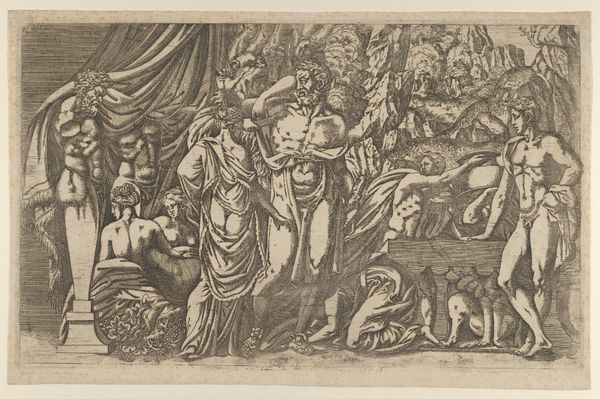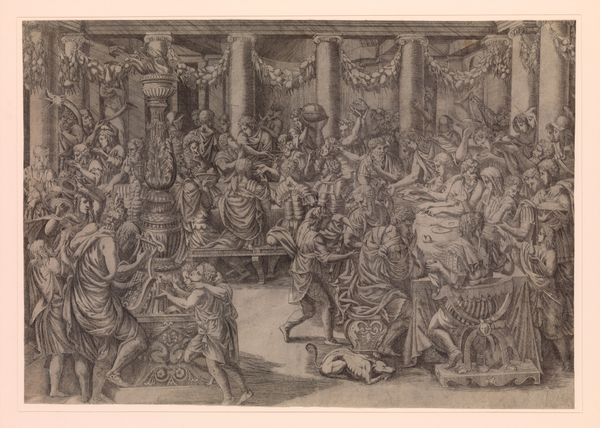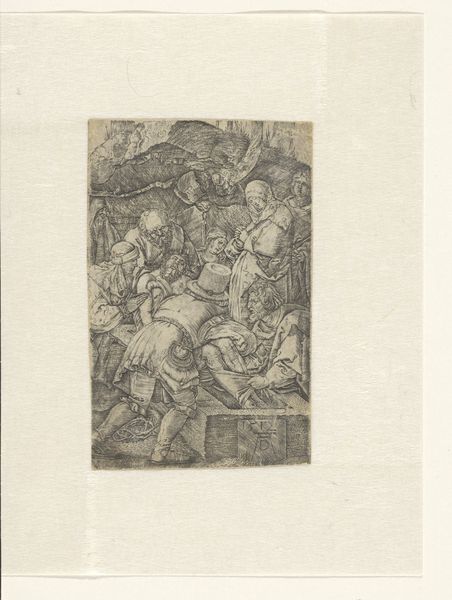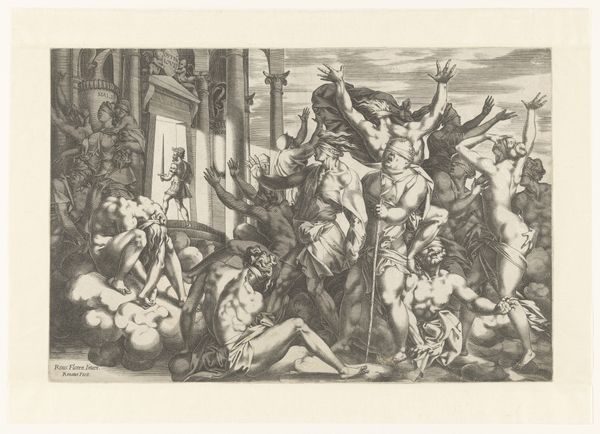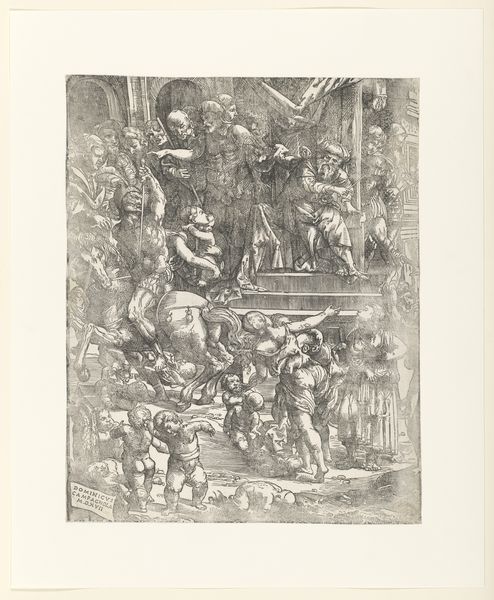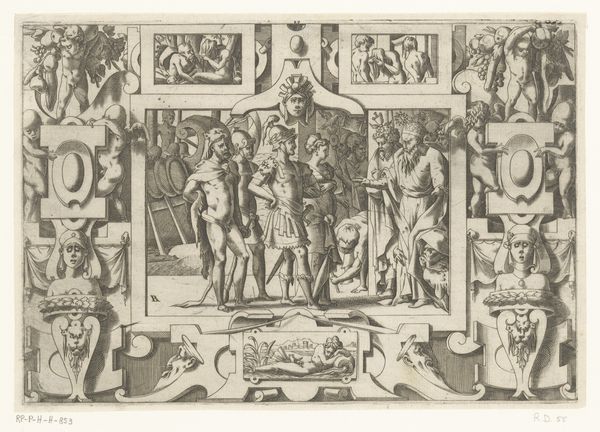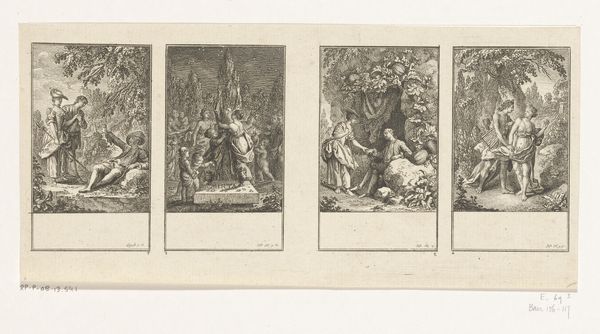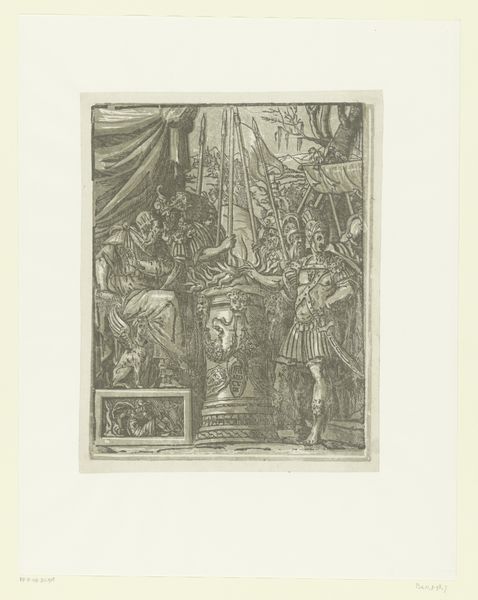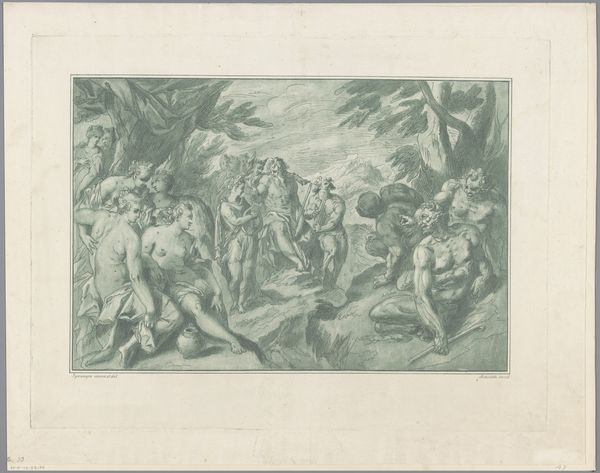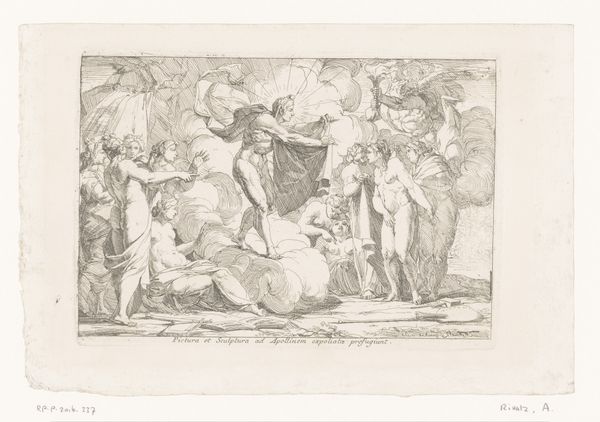
drawing, print, etching, engraving
#
pencil drawn
#
drawing
#
aged paper
#
toned paper
#
light pencil work
# print
#
etching
#
pencil sketch
#
old engraving style
#
figuration
#
personal sketchbook
#
pen-ink sketch
#
sketchbook drawing
#
pencil work
#
history-painting
#
italian-renaissance
#
engraving
Dimensions: height 270 mm, width 309 mm
Copyright: Rijks Museum: Open Domain
Editor: We’re looking at Jean Chartier's engraving, "Alexander the Great Burning Persepolis," which was created sometime between 1514 and 1580. It’s quite a detailed print. There is something almost dreamlike about it, even with such a destructive scene depicted. What do you see in this piece from a formalist perspective? Curator: Immediately, I am drawn to the artist's sophisticated handling of line and space. Consider the density of the linework within the architectural background versus the relatively sparse rendering of the figures in the foreground. Notice how this contrast creates depth and draws our eye toward the drama unfolding, this burning of Persepolis. Do you observe any other formal devices being employed? Editor: The use of light, perhaps? There's not much tonal variation, but the lightest areas seem to highlight the figures' bodies, almost like a spotlight on their forms. And there's definitely a classical influence, it reminds me of the Renaissance. Curator: Precisely. The figures themselves exemplify a particular ideal of the human form characteristic of the Renaissance, rooted in classical ideals. Further observe the composition—how the figures are arranged and how their poses interact with the architectural space behind them. Do you perceive any dynamic tension or harmony in their arrangement? Editor: It’s kind of both. They seem purposefully posed, a bit stiff maybe, within the chaos of the background. Maybe it creates some symbolic dichotomy. Curator: Perhaps, and note how the artist organizes forms to structure the scene. The geometric rigidity of the architecture contrasts against the dynamism in the foreground. What might that contrast imply? Editor: It shows control within a destruction of structure. It is a unique take that I will remember to consider next time. Curator: A valuable insight. Studying art formally allows us a structured way to address more subjective interpretations.
Comments
No comments
Be the first to comment and join the conversation on the ultimate creative platform.
